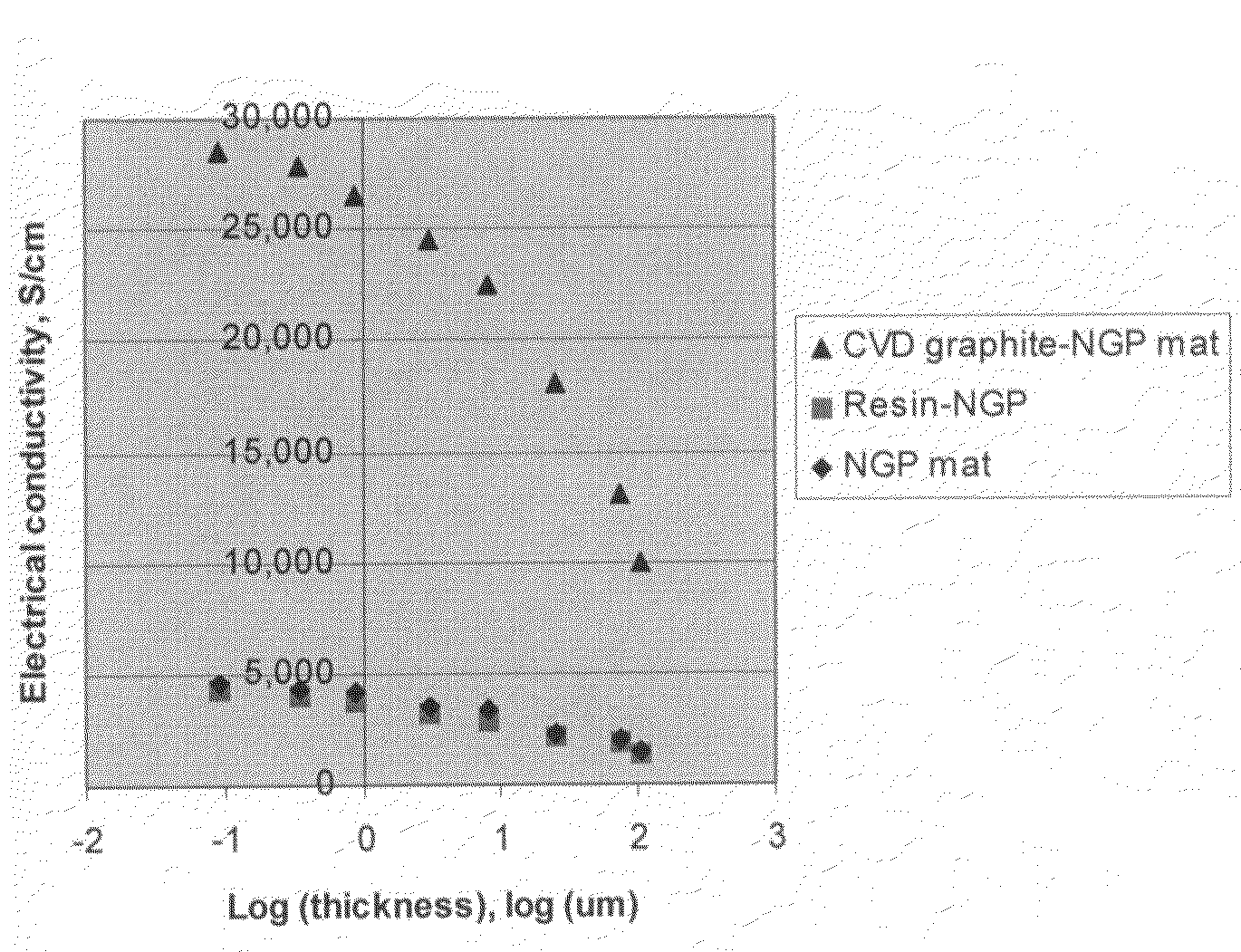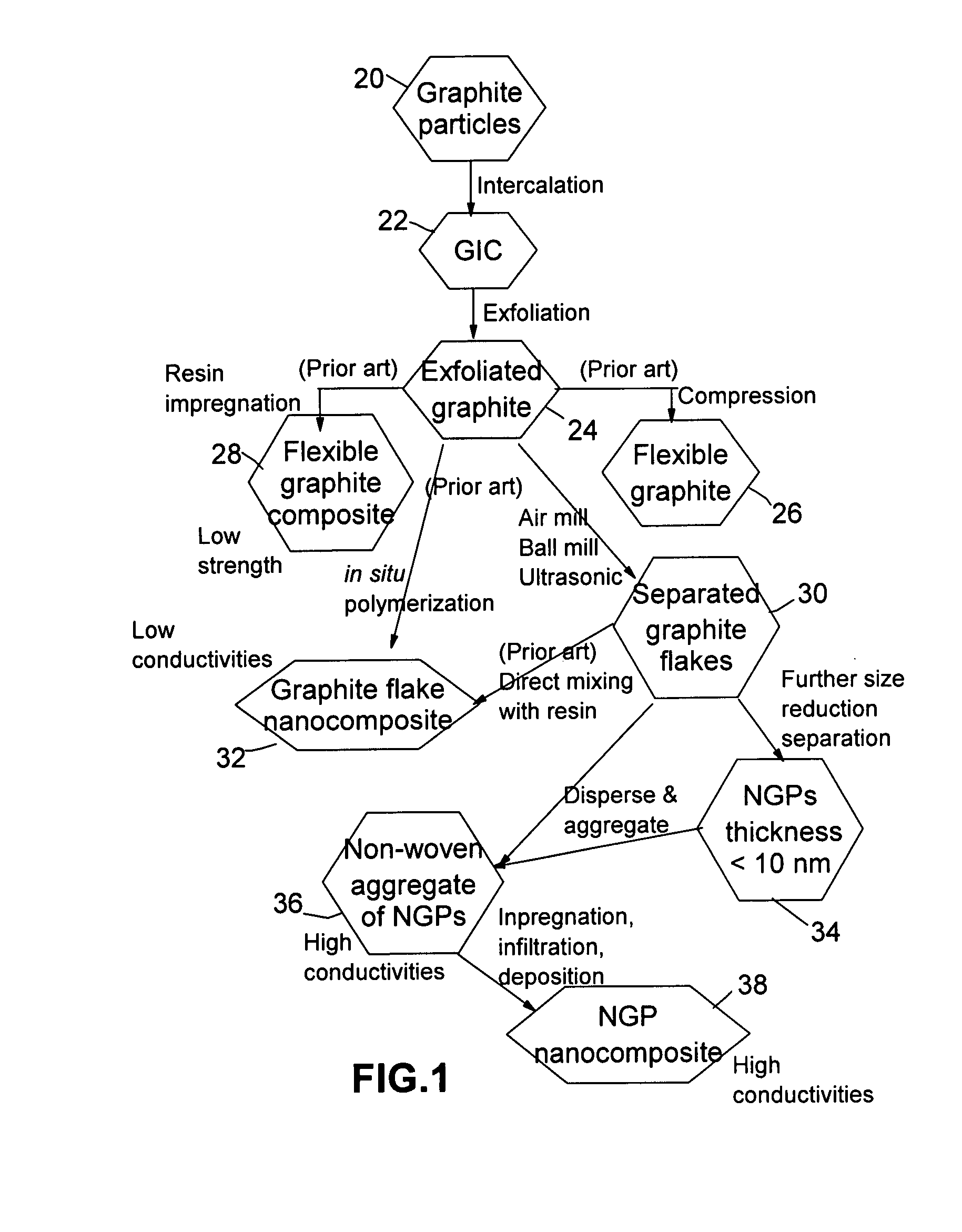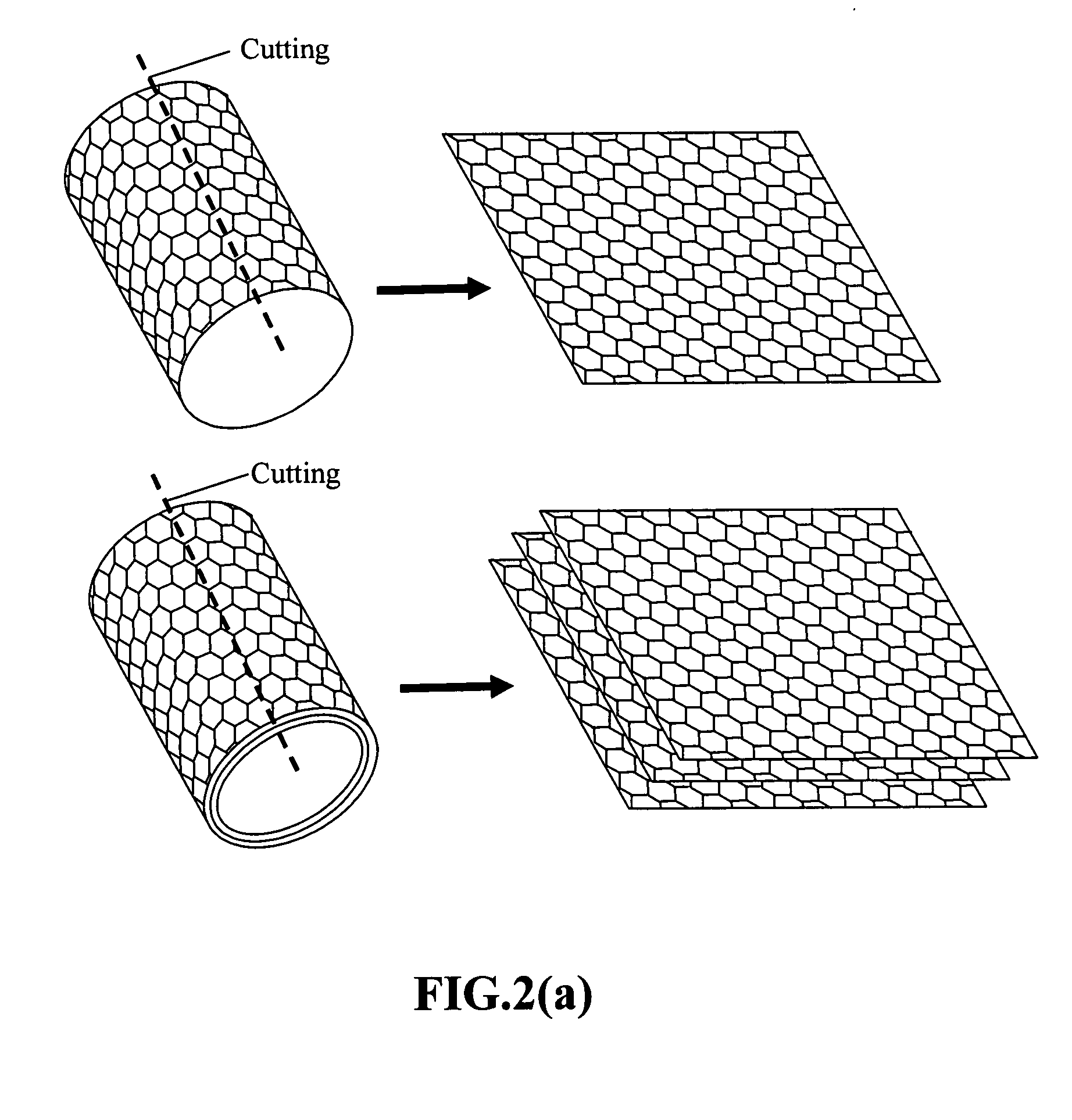Nano-scaled graphene plate films and articles
a graphene plate and nano-scale technology, applied in the field of nano materials, can solve the problems of high material cost, high material cost, and significant hindering the widespread application of cnts, and achieve the effect of improving thermal conductivity and high thermal conductivity
- Summary
- Abstract
- Description
- Claims
- Application Information
AI Technical Summary
Benefits of technology
Problems solved by technology
Method used
Image
Examples
example 1
Preparation of Exfoliated Graphite and Separated Flakes
[0056]Natural flake graphite with an average diameter of 150 μm was used for preparing the exfoliated graphite. Concentrated sulfuric acid, nitric acid (chemically pure), glacial acetic acid, and potassium permanganate were used as the chemical intercalate and oxidizer to prepare graphite intercalation compounds (GICs). Chemically pure alcohol (95% by volume) and distilled water were used as a dispersing medium for the preparation of fully foliated and separated graphite flakes or NGPs.
[0057]Exfoliated graphite (EG) was prepared according to the following procedure: The natural flake graphite was first dried in a vacuum oven for 24 h at 80° C. Then, a mixture of concentrated sulfuric acid and fuming nitric acid (4:1, v / v) was slowly added, under appropriate cooling and stirring, to a three-neck flask containing graphite flakes. After 16 hurs of reaction, the acid-treated natural graphite was filtered and washed thoroughly with d...
example 2
Preparation of Exfoliated Graphite and Separated Flakes
[0059]In this graphite intercalation route, the ratio among natural graphite, nitric acid, glacial acetic acid, and potassium permanganate was 1:1:0.8:0.06 by weight. The procedure began with mixing natural graphite particles with potassium permanganate in a glass beaker, which was cooled with an ice bath. Concentrated nitric acid was carefully poured into the beaker while the mixture was magnetically stirred. Then, glacial acetic acid was slowly added to the mixture using a pipette. After 21 hours of reaction, the acid-treated natural graphite was filtered and washed thoroughly with deionized water until the pH level of the solution reached 6. After being dried at 80° C. overnight, the resulting graphite intercalation compound was subjected to a thermal shock at 1050° C. for 15 seconds in a muffle furnace to form exfoliated graphite. Part of the exfoliated graphite worms was subjected to further size reduction and separation by...
example 3
Preparation of Exfoliated Graphite and Separated Flakes
[0060]The graphite intercalation procedure was similar to that used in Example 2, but nitric acid was replaced by sulfuric acid. The ratio among natural graphite, sulfuric acid, glacial acetic acid, and potassium permanganate was 1:0.5:2:0.07 by weight. After exfoliation at 1050° C. for 15 seconds, the expanded graphite worms were re-immersed in an intercalant solution for 21 hours, followed by washing, drying, and re-exfoliation again at 1050° C. for 15 seconds. The resulting graphite flakes are mostly thinner than 10 nm.
PUM
| Property | Measurement | Unit |
|---|---|---|
| Percent by mass | aaaaa | aaaaa |
| Thickness | aaaaa | aaaaa |
| Thickness | aaaaa | aaaaa |
Abstract
Description
Claims
Application Information
 Login to View More
Login to View More - R&D
- Intellectual Property
- Life Sciences
- Materials
- Tech Scout
- Unparalleled Data Quality
- Higher Quality Content
- 60% Fewer Hallucinations
Browse by: Latest US Patents, China's latest patents, Technical Efficacy Thesaurus, Application Domain, Technology Topic, Popular Technical Reports.
© 2025 PatSnap. All rights reserved.Legal|Privacy policy|Modern Slavery Act Transparency Statement|Sitemap|About US| Contact US: help@patsnap.com



